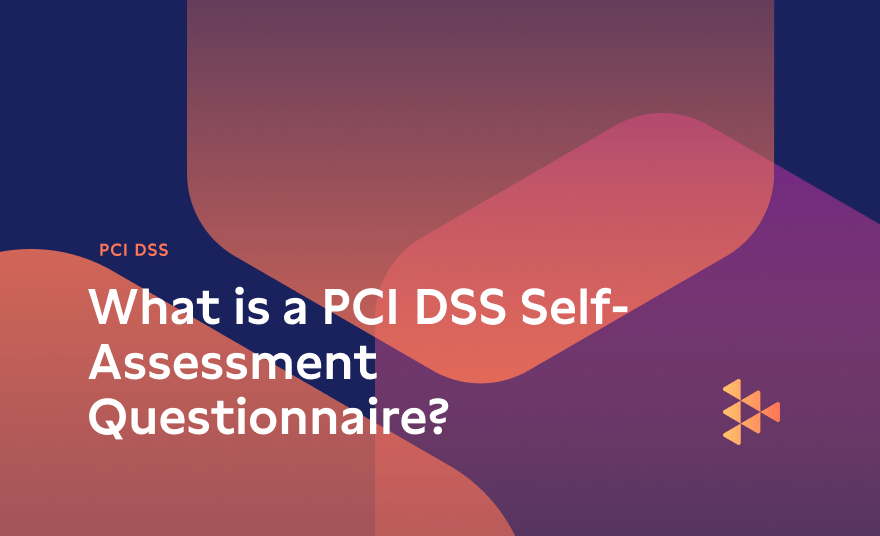What is a PCI DSS Self-Assessment Questionnaire?
The PCI DSS Self-Assessment Questionnaire (SAQ) is a tool designed to help organizations assess their compliance with the Payment Card Industry Data Security Standard (PCI DSS).
This questionnaire is intended for smaller merchants or service providers that handle fewer transactions and may not require a full formal assessment by a Qualified Security Assessor (QSA). The SAQ allows organizations to evaluate their adherence to PCI DSS compliance requirements based on their specific payment card processing environment and practices.
Who Needs to Complete a PCI DSS Self-Assessment Questionnaire?
The PCI DSS Self-Assessment Questionnaire is typically used by:
- Small Merchants: Businesses that process fewer transactions and do not store, process, or transmit cardholder data extensively may use the SAQ to assess compliance without needing a formal assessment.
- Service Providers: Certain service providers who do not handle cardholder data directly or who have limited interactions with such data may also be eligible to complete the SAQ.
- Organizations with Low-Risk Payment Environments: Businesses that handle payment card information in a manner that minimizes risk and complexity may use the SAQ to demonstrate compliance.
Eligibility Criteria
Eligibility for using the SAQ depends on factors such as transaction volume, the way cardholder data is handled, and the payment processing environment. Organizations should review the PCI DSS guidelines to determine if the SAQ is appropriate for their situation.
Which PCI DSS Self-Assessment Questionnaire is Right for Your Business?
Selecting the right PCI SAQ depends on how your organization processes and stores payment card information. Here’s a brief overview of the different SAQ types:
- SAQ A: For merchants who outsource all payment processing to a third-party service provider and do not store, process, or transmit cardholder data. This is suitable for businesses using fully outsourced payment solutions, such as e-commerce platforms or hosted payment pages.
- SAQ A-EP: For e-commerce merchants who outsource payment processing but still have a website that could impact the security of payment transactions. This SAQ applies to businesses with complex e-commerce environments.
- SAQ B: For merchants who use standalone, dial-out terminals or PTS-approved payment devices but do not store cardholder data. This is suitable for businesses with minimal payment card data handling and no electronic storage.
- SAQ B-IP: For merchants using standalone, IP-connected payment terminals but do not store cardholder data. This SAQ is for businesses with IP-connected payment devices that do not involve cardholder data storage.
- SAQ C: For merchants who process cardholder data through a payment application connected to the internet, and who store cardholder data but do not use standalone terminals. This is suitable for businesses with in-house payment processing solutions.
- SAQ C-VT: For merchants who manually enter cardholder data into a virtual terminal on a secure computer system. This is applicable to businesses using virtual terminals for payment processing.
- SAQ D: For merchants and service providers that do not fit into any other SAQ category. This is the most comprehensive SAQ and is used by organizations with complex environments or those that store, process, or transmit cardholder data.
Choosing the correct PCI DSS Self-Assessment Questionnaire is crucial to ensure that your compliance efforts are aligned with your business’s payment processing practices.
Read More: Guide to PCI DSS Compliance Checklist
How to Submit Your PCI DSS SAQ ?
The process for submitting your PCI DSS Self-Assessment Questionnaire involves several steps:
- Complete the Questionnaire: Answer all questions in the PCI DSS Self-Assessment Questionnaire relevant to your business’s payment processing environment. Provide detailed and accurate information to ensure a comprehensive assessment.
- Conduct a Self-Assessment: Review your responses and verify that you meet all PCI DSS requirements. Make any necessary adjustments to address gaps in compliance.
- Compile Supporting Documentation: Gather any additional documentation required to demonstrate compliance with the SAQ requirements. This may include security policies, procedures, and evidence of implemented security measures.
- Submit to Acquiring Bank: Submit the completed SAQ and any supporting documentation to your acquiring bank or payment processor. They will review the submission to ensure compliance with PCI DSS standards.
- Maintain Records: Keep copies of your completed SAQ, supporting documentation, and any correspondence with your acquiring bank for future reference. Regularly update these records as needed.
Note: Ensure that you follow any specific submission instructions provided by your acquiring bank or payment processor.
Read More: What is PCI DSS Certification: A Beginners Guide
How We Can Help You with PCI DSS Compliance
Achieving and maintaining PCI DSS compliance can be complex and time-consuming. Here’s how we can assist you in navigating the process:
- Guidance on SAQ Selection: We can help you determine the appropriate PCI DSS Self-Assessment Questionnaire for your business based on your payment processing environment and data handling practices.
- SAQ Completion Assistance: Our experts can guide you through the completion of the SAQ, ensuring that all questions are answered accurately and that your compliance efforts are properly documented.
- Gap Analysis and Remediation: We offer gap analysis services to identify areas where your current security measures may fall short of PCI DSS requirements. We then provide recommendations and support for remediation.
- Ongoing Compliance Support: We offer ongoing support to help you maintain PCI DSS compliance, including regular reviews, updates, and training for your team.
- Documentation and Submission: Our team can assist with compiling and submitting your SAQ and supporting documentation to your acquiring bank or payment processor.
Contact us to learn more about how we can support your PCI DSS compliance journey.
FAQs
1. What is the purpose of the PCI DSS Self-Assessment Questionnaire?
The PCI DSS Self-Assessment Questionnaire helps organizations assess their compliance with PCI DSS standards based on their specific payment processing environment.
2. How do I determine which SAQ is right for my business?
Choosing the right SAQ depends on how your business processes and stores payment card information. Review the different SAQ types and their requirements to find the one that matches your payment processing setup.
3. Can I use the SAQ if my business processes a large volume of transactions?
For businesses processing a high volume of transactions or with complex environments, a full assessment by a Qualified Security Assessor (QSA) may be required instead of using the SAQ.
4. How often should I complete the PCI DSS SAQ?
The PCI DSS SAQ should be completed annually to ensure ongoing compliance. Regular updates and reviews may also be necessary to address any changes in your payment processing environment.
5. What should I do if I need help with the SAQ?
If you need assistance with the SAQ, consider seeking help from a PCI DSS compliance expert or consultant. They can guide you through the process, help with documentation, and ensure that your compliance efforts are aligned with PCI DSS requirements.

